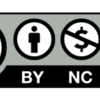This report outlines the eligibility rules for students in higher education across three public benefit programs—the Supplemental Nutrition Assistance Program (SNAP), Child Care and Development Fund (CCDF), and Temporary Assistance for Needy Families (TANF). Navigate these sections to learn more about how each of these programs can address students’ basic needs.
Executive Summary
For many families, achieving a college credential remains one of the most reliable pathways to improving economic security and prosperity. Yet despite increasing demand for college degrees and certificates, far too many people do not attempt college or fail to complete their program of study. Many students—especially students of color and those with low incomes—face ever-higher costs of attendance, including tuition, housing, food, child care, transportation, technology, and more. Lack of access to basic needs makes it much harder for students to access and complete a college credential. Among enrolled students, nearly three in five college experience food insecurity, housing insecurity, or homelessness, forcing them to decide whether to stay in college or risk leaving with debt but no degree. Consistently, people report that cost-of-living expenses and the cost of going to college—including wanting to avoid debt—are their biggest barriers to a degree or credential.[1]

In recognition of the critical role of college credentials in a thriving and competitive 21st century economy, almost every state in the U.S. has set attainment goals to increase the number of residents with a postsecondary credential.[2] However, only a few states are meeting their goals. Policymakers should look to existing federal, state, and institutional financial aid programs to help students meet their needs and address college affordability and equity in higher education.
Yet outside of traditional higher education and financial aid programs, states have access to billions of dollars[3] in resources through programs that could be better aligned to help students afford basic expenses. These programs, including the Supplemental Nutrition Assistance Program (SNAP), Child Care and Development Fund (CCDF), and Temporary Assistance for Needy Families (TANF), are often ignored in the context of higher education but can be leveraged to address food insecurity, reduce living costs, and provide child care to parenting students.
While these public benefit programs are federally funded, states have significant authority within current federal guidelines to improve these public benefit programs to better serve those who enroll in postsecondary education. Yet many states have made choices that effectively limit or restrict participants’ ability to pursue education and training, thereby undermining federal and state investments in economic growth for both individuals and our society as a whole.
In this report, we outline the student rules across three public benefit programs—SNAP, CCDF, and TANF—and identify many opportunities for states to reduce restrictions on education-related policies within current federal guidelines. We identify ways that states have expanded, clarified, or reformed student rules to further support higher education attainment and the economic self-sufficiency and mobility of their residents. Across all three programs, we offer recommendations to state policymakers to implement these programs and interpret rules to reduce barriers to access for students and families and further incentivize postsecondary enrollment and persistence.
Introduction
Surveys consistently show that college students face substantial and persistent basic needs insecurity.[4] Three in five college students do not have enough to eat or a safe place to live, and millions lack access to essential resources such as health care, child care, transportation, course materials, and technology. [5]
Nationally representative federal data have also confirmed that all types of students at all types of colleges struggle to meet their basic needs.[6] Students most likely to be affected by the rising cost of everyday expenses have been forced to make increasingly difficult decisions about whether they will attend college despite the clear benefits for themselves and society. For those students who do enroll, too many must borrow to cover educational and living costs, and that debt investment may not pay off, especially if they don’t complete a degree or if a low-quality program diminishes their post-college prospects.

The cost of food, housing, and transportation have all risen substantially over the last few years; cumulative inflation from spring 2020 to fall 2023 was more than 19%.[7] Families across the country face a lack of affordable housing and rising child care costs, with students who are also parenting a child—more than 1 in 5 undergraduate students—confronting the declining availability of affordable child care in particular.[8] Other students have been forced to navigate job loss, rapid changes in industries, the stress of caring for loved ones, and not having the right equipment or space to manage an increasingly hybrid school and work environment, all of which can trip them up on their path toward a credential.
During the peak of the COVID-19 pandemic, total undergraduate college enrollment plummeted by nearly 1.1 million students in the United States.[9] Community college enrollments represented an outsized share of this decline, with the number of students enrolled in the sector falling by 17% during the pandemic—a drop of more than 830,000 students.

In fall 2023, college enrollments began to rise again for the first time since the pandemic, but only slightly—a mere 1.2% increase. A deep hole remains. Delays associated with the rollout of the 2024-25 Free Application for Federal Student Aid (FAFSA) have thrown the current admissions cycle into chaos.[10] The slow “return to normal” for higher education is especially alarming given the continued need for more postsecondary credentials across the economy. Recent research from the Georgetown Center on Education and the Workforce (CEW) shows that in 2021, 68% of all jobs required some form of postsecondary education. By 2031, that rate will increase to 72% of all jobs, with 42% requiring at least a bachelor’s degree.[11]
The pandemic exacerbated students’ challenges in meeting their basic needs and continuing college. Now, more than ever, we need to invest in building an ecosystem of support for all students who wish to attain a postsecondary degree. Unfortunately, the supports we have in place too often fail systemically marginalized students the most (Figure 1). During the fall of 2020, The Hope Center’s national Student Basic Needs Survey (hereafter, “The Hope Center survey”) found that 75% of Indigenous, 70% of Black, and 70% of American Indian or Alaska Native students experienced some form of basic needs insecurity, compared to 54% of White students.[12] These stark differences are not new; however, they highlight just how disproportionately affected students of color are when it comes to student basic needs insecurity.
Federal programs, including SNAP, CCDF, and TANF could address food insecurity on college campuses, provide child care to parenting students, and deliver cash assistance to students in need. However, due to restrictive and confusing student eligibility rules, many students are losing out on much-needed support.[13] As Figure 2 shows, students exhibit alarmingly low rates of awareness and high rates of confusion about public benefits programs.
States have significant discretion over the design and delivery of federal and state programs. These state decisions affect the distribution and impact of billions of dollars in direct aid to people.
Within SNAP, CCDF, and TANF, states have extensive latitude to align policies, programs, and partnerships to reflect state priorities. Most state program rules reflect an outdated, counterproductive “work first” approach that explicitly restricts or discourages educational pathways and plays on racist assumptions, despite incontrovertible evidence showing that demand for postsecondary credentials will continue to grow.[14]
Removing barriers to improve people’s ability to access and complete postsecondary credentials is critical. Too many states route people into low-value job searches or “workfare” activities that check a short-term and shortsighted compliance box but do nothing to connect people to opportunities that could reduce their need for public supports in the future. Making connections to low-wage employment without finding ways to ensure people can increase their income does nothing to improve their, or their children’s, financial stability or break the intergenerational poverty cycle.
College credentials remain one of the strongest pathways to achieving economic security and mobility. Yet, state policy choices that prioritize low-wage work over education undermine federal and state investments in higher education and workforce development.
Across SNAP, CCDF, and TANF, work requirements impede skill and credential attainment. These requirements often require students to be employed for a specific number of hours each week while pursuing education. Work requirements in public benefit programs are well-documented to have racist roots and are based on faulty assumptions that people do not want to work.[15] They also create substantial barriers to success for students who are already handling the full-time responsibility of getting an education.
Methodology
From April 2021 through November 2022, we scanned all websites of the relevant state agencies that administer SNAP, CCDF, and TANF across all 50 states. All information in this report from state plans, manuals, and materials is up-to-date as of the end of 2022 unless otherwise noted and cited.
Overall, we found a general lack of resources for students seeking information about federal assistance programs. Most of this information is expected to be found in a “state plan” (or state policy manual, in the case of the SNAP program). In the case of CCDF and TANF, the state plan is a mandatory document that states submit to the U.S. Department of Health and Human Services (HHS) which lays out how the state will administer those programs within federal guidelines, including eligibility, benefit levels, additional services, reimbursement methods, and other processes. These documents are a critical element of federal benefit programs, yet many of these plans across the 50 states are not easily available, nor are they always located on their respective program website, despite requirements that they are available to the public.
Further, specific information for students is often missing altogether. For example, most SNAP information on agency websites included general eligibility rules but failed to provide any information specifically on student eligibility. TANF and child care service pages failed to provide information on how parents can pursue postsecondary activities through their program. Most of TANF’s state plans lacked any information on postsecondary participation, requiring us to scan other sources, including state manuals and the 2020 Welfare Rules Databook.[16] While all recent CCDF state plans were posted on the U.S. Department of Health and Human Service’s Administration for Children & Families website, most CCDF plans failed to specify what types of postsecondary degrees were allowed and also failed to include information on time limits and study and travel time.[17] This challenging and opaque research process across the federal programs was a clear demonstration of how difficult it would be to understand for students seeking public assistance.
Click through to learn more about:
The following three sections dive further into the student rules for SNAP, CCDF, and TANF, respectively. They outline which states have maximized student eligibility, removed unnecessary burdens and requirements, and interpreted federal guidelines to ensure students can focus on their studies without being worried about losing assistance.
We highlight areas where states should consider expanding benefits or more clearly communicating their existence and look at other ways to ensure that states, in implementing these critical programs, treat students as humans first.
Conclusion
Every level of postsecondary education students attain correlates with improved economic outcomes for themselves and their families. Yet in order to truly build an inclusive and accessible higher education system, and reduce unacceptable racial disparities across both higher education and the economy, policymakers must acknowledge the ways that policies like public benefit programs are designed to close off, rather than foster, opportunity.
Federal benefit programs like SNAP, CCDF, and TANF often hinder participation in postsecondary education, contradicting ample research showcasing higher education's important role in promoting economic security and mobility. Confusing and restrictive federal and state eligibility can often hinder a student’s ability to access such benefits.
Fortunately, states have considerable flexibility and autonomy in how they administer these federally backed programs. In this report, we provided key examples of states that have supported college access and completion through broad definitions of eligibility that support higher education programs, removing restrictive time limits and academic progress, ensuring that enrollment in higher education supports activity requirements, and eliminating any other barriers that may undermine education.
Our research also points to the significant lack of information on student eligibility, leading to confusing and contradictory information on how students can qualify for benefits. States can do much more to publish transparent information about their public benefit programs. By maximizing federal eligibility and boosting uptake of SNAP, TANF, CCDF, and other public benefits among students, states can meaningfully reduce basic needs insecurity and improve student success.
We hope this guide serves as a first step in understanding the complicated nature of eligibility requirements and that policymakers hear our calls for significant program reforms to ensure that people with the lowest incomes are supported in their journey toward reaching their educational goals.
Acknowledgments
We thank our reviewers for sharing their expertise and feedback on this report. Thank you to Ed Bolen, Director of SNAP State Strategies at the Center on Budget and Policy Priorities, for lending his expertise on the Supplemental Nutrition Assistance Program. We would also like to thank Stephanie Schmit, Director of Child Care and Early Education at the Center of Law and Social Policy (CLASP), and Alejandra Londono Gomez, who formerly served as a Policy Analyst on Child Care and Early Education at CLASP, for lending their expertise on the Child Care and Development Fund. Lastly, we would also like to acknowledge Bryce McKibben from The Hope Center for his feedback reviewing and editing the report.
We also express our gratitude to The Hope Center’s communication team for their immense contributions. Many thanks to Lauren Bohn and Joshua Rudolph for copy-editing, and Rjaa Ahmed for designing the report. The completion of this project could not have been accomplished without the support of this group of folks.
Disclosure
The findings and conclusions contained within do not necessarily reflect the positions or policies of the Center for Budget and Policy Priorities, the Center for Law and Social Policy, or The Institute for College Access & Success.
Suggested citation
Rios, L., Welton, C., and Huelsman, M. (2024, May 6). The State of State Choices: A national landscape analysis of postsecondary eligibility restrictions and opportunities in SNAP, CCDF, and TANF. The Hope Center at Temple University.
References
[1] Edge Research and HCM Strategists. (2022, Sept). Where are the students? New Research into college enrollment declines.
[2] Lumina Foundation. (2024). A stronger nation: Higher education attainment data.
[3] Congressional Research Service. (2021, December). Federal spending on benefits and services for people with low income: FY2008-FY2020.
[4] The Hope Center at Temple University. (2021, March). The Hope Center Survey 2021: Basic needs insecurity during the ongoing pandemic.; Trellis Company. (2023, May). Student Financial Wellness Survey, Fall 2022.; Community College Survey of Student Engagement. (2022, October). Mission critical: The role of community colleges in meeting students’ basic needs.
[5] The Hope Center at Temple University. (2021). The Hope Center Survey 2021: Basic needs insecurity during the ongoing pandemic.
[6] McKibben, B., Wu, J., and Abelson, S. (2023, August). New federal data confirm that college students face significant—and unacceptable—basic needs insecurity. The Hope Center at Temple University.
[7] U.S. Bureau of Labor Statistics. (2023). Consumer Price Index (CPI) Calculator.
[8] Rice, E. et al. Child care and housing: Big expenses with too little help available. The Center on Budget and Policy Priorities and Center for Law and Social Policy.
[9] Measured from fall 2019 to fall 2022. See: National Student Clearinghouse Research Center. (2023). Current term enrollment estimates: Fall 2023.
[10] Green, E. & Montague, Z. (2024, March 13). Inside the blunders that plunged the college admission season Into disarray. The New York Times.
[11] Carnevale, A. et al. (2023). After everything: Projections of jobs, education, and training requirements through 2031.
[12] The Hope Center at Temple University. (2021).
[13] The Hope Center at Temple University. (2023). The Hope Center’s 2023 federal policy priorities.
[14] Carnevale, A. et al. (2023). After everything: Projections of jobs, education, and training requirements through 2031.
[15] Minoff, E. (2020). The racist roots of work requirements. Center for the Study of Social Policy.
[16] Shantz, K., Dehry, I., Knowles, S., Minton, S., & Giannarelli, L. (2020). Welfare rules databook: State TANF policies as of July 2020, OPRE report 2020-141. Office of Planning, Research, and Evaluation, Administration for Children and Families, U.S. Department of Health and Human Services.
[17] Office of Child Care. Approved CCDF plans FY 2022-24. (2022) Administration for Children & Families. Department of Health & Human Services.





